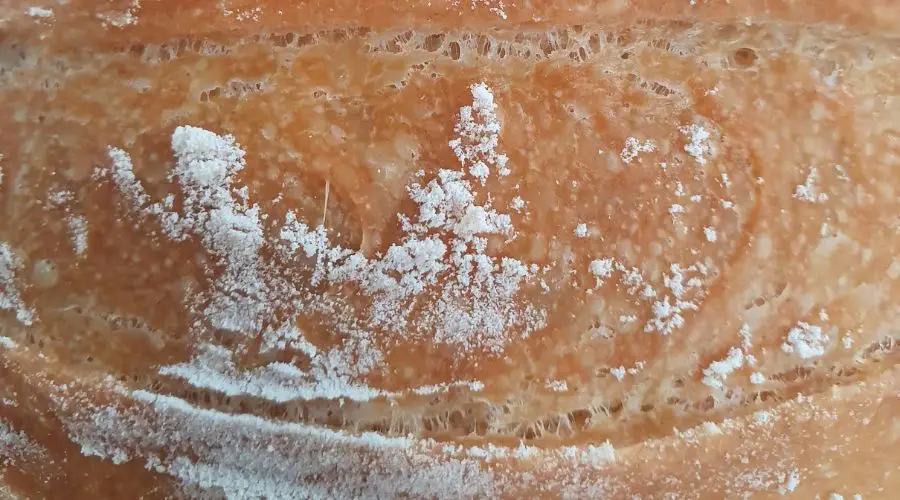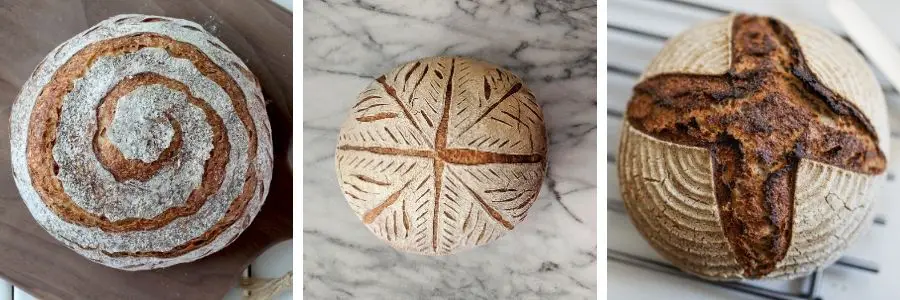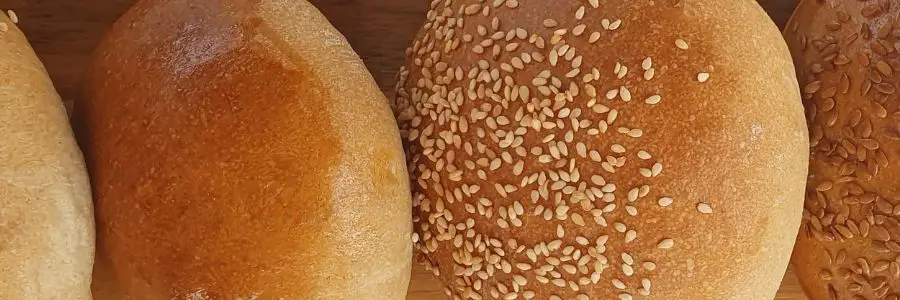You see a lot of celebrity chefs using steam in the oven when they bake bread, but they don’t always fully explain the difference between bread which is baked with steam vs bread baked in a dry oven.
I’ve put together this post to explain exactly what steam does in the oven, how it can make a difference to the outcome of the bread and find out if it’s something which home-bakers should even bother doing? So, what does steam do?
The main purpose of using steam in the oven to bake bread is to help the bread dough expand as it bakes. Steam creates a moist environment which keeps the outer crust of the loaf softer for longer and therefore allowing it to expand before it firms up. Steam also helps to create a shiny loaf with a bubbly effect on the crust.
I’ve recently done some testing with different ways in which you can add steam to the oven to find out which works, read on to find out more about the best way to use and create steam when baking bread.
The Full Story on What Steam Does For Bread
Bread is normally baked at a high temperature (of around 220°C/428°F or above) which can very quickly seal the outer crust of the loaf.
By creating a steamy environment within the oven, instead of making the outer crust harden up straight away it keeps it moist for the first part of the bake and allows the crust to expand.
This allows one more push for a rise in the oven on top of the work you’ve done in proving the dough before baking.
Using steam in the will produce a loaf of bread which has a crispy crust with a bubbly looking texture along with a shinier look than a loaf which is baked in a dry oven.
Below is a close up a loaf I recently made using steam so you can see the bubble effect I’m talking about. It’s this added texture which helps to take your bread up a level.

How to Steam Bake Bread
For the purpose of this article, I have tested some different ways to create steam in the oven including:
- Placing a deep tray filled water in the bottom of the oven before it’s heated up.
- Adding boiling water to a cold baking tray and placing it in a pre-heated oven before placing the bread in the oven.
- Pouring boiling water into a preheated tray in a pre-heated oven.
- Using various tray sizes to hold the water.
I’ve found the best way to create maximum steam which has the biggest impact on the appearance of the bread is by following the steps below:
- Place a large (deepish) baking tray into the bottom of the oven – the grill tray which usually comes with an oven and slides in and out between the racks is best.
- Once the oven is up to temperature pour boiling water into the tray (enough so it doesn’t all evaporate).
- Immediately place the bread into the oven, shut the door and leave it closed while it bakes.
If you follow this process take care when you pour in the boiling water because it will instantly cause steam to rise up towards your hands and face, so you’ll need to stand back and wear a good pair oven gloves.
It’s this sudden blast of boiling water and steam which really seems to make a difference when compared to water which is just heated up in the oven.
TIP: Not sure if you have all the necessary bread baking equipment at home? Check out my recommended picks below (Amazon links):
-
- Scale: Nicewell 22lb Digital Kitchen Scale
- Mixing Bowls: OXO Stainless Mixing Bowls Set
- Pastry Scraper: OXO Stainless Pastry Scraper
- Loaf Pan: OXO Non-stick Loaf Pan
- Kitchen Thermometer: ThermoPro Digital Thermometer
- Stand Mixer (optional): Kenwood Kmix Stand Mixer
What Else Can You Do to get More Rise in the Oven
Using steam to bake bread is a great way to get a final rise into the bread before the crust completely firms up, but there are some other things which you can do before baking to make sure you can get the best rise possible, including:
- Making sure the dough has been allowed enough time to prove.
- Using a good yeast which isn’t stale.
- Using the best bread flour you can get with a high protein level.
- Slashing or scoring the dough before it’s baked to allow further expansion.
Slashing (or Scoring) the Dough Before You Bake with Steam
Slashing (or scoring) dough before its steam baked in an oven is a great way to get added boost and a final push before the crust firms up.
Dough slashing and baking with steam are a combination which works well together because both processes help to boost the final rise.
The groves made in the dough also give the crust more texture and crunch which again work well with steam baking.

Using Steam to Prevent Bread Burning
Along with helping bread to rise and to produce a crispy crust steam creates a moist atmosphere in the oven which can help to prevent the bread burning or going to dark as it bakes.
Instead, the bread will develop a rich golden colour which all helps to add to the ‘artisan look’.
Because bread is usually baked at a very high temperature adding steam to the oven can be a great way for beginners to gain confidence by creating a loaf that is baked and crispy without worrying about burning so much.
When Should You Not Use Steam to Bake Bread?
Steam is best used for bread recipes where you want to achieve a crispy crust. So for soft bread recipes such as sandwich loaves, soft rolls and milk bread, I wouldn’t recommend steam baking.
If you’re looking to bake bread with a thinner crust adding some fat such as butter or oil and or some milk so replace some of the water content can help to achieve this effect.
Baking Bread Without Steam
Baking bread without steam also works perfectly well, but it can look a bit plain on top, here are a few ideas on how you can make the crust look good without steam:
- If you’re looking to achieve a shiny top without creating steam an egg wash is a good way to get a golden and glossy crust (depending on the bread type).
- It’s also good to slash the dough too for the rise, extra texture and just to make the bread look more pretty. Although this doesn’t work for all recipes such as ciabatta or bread rolls.
- Brown bread recipes work really well with a sprinkle of seeds which you can stick on using a spray of water, milk or egg wash. The seeds brown in the oven and create a really deep nutty flavour and added texture.
- Dust lightly with flour before you bake, but not too much because it can burn and go dark.

Allowing Steam to Escape Once it’s Baked
If you’re using steam in your oven to bake bread it’s still important to make sure steam can escape from the underside of the bread as it cools.
Bread which is left on a flat surface after it comes out of the oven will become soggy underneath because the steam has nowhere to go, so it’s important to cool it on a wire rack where the steam can escape.
Does a Home-Baker Need to Steam Bake Bread?
Whether or not you use steam in the oven to bake bread is entirely up to you, bread-making is such a varied and experimental process that it really is a case of – what works for the baker.
I really like the effect which steam creates along with the crispy crust, so if I’m making a cob, bloomer or crusty tin, I like to use steam, but sometimes I don’t bother.
If you’ve not tried using steam before, I would recommend giving it a try so you can compare the difference – just don’t forget the gloves!
You might also like..
I hope this post has helped you to understand more about how to steam bake and when you do and don’t need to bake with steam.
You might also find the following posts helpful:
